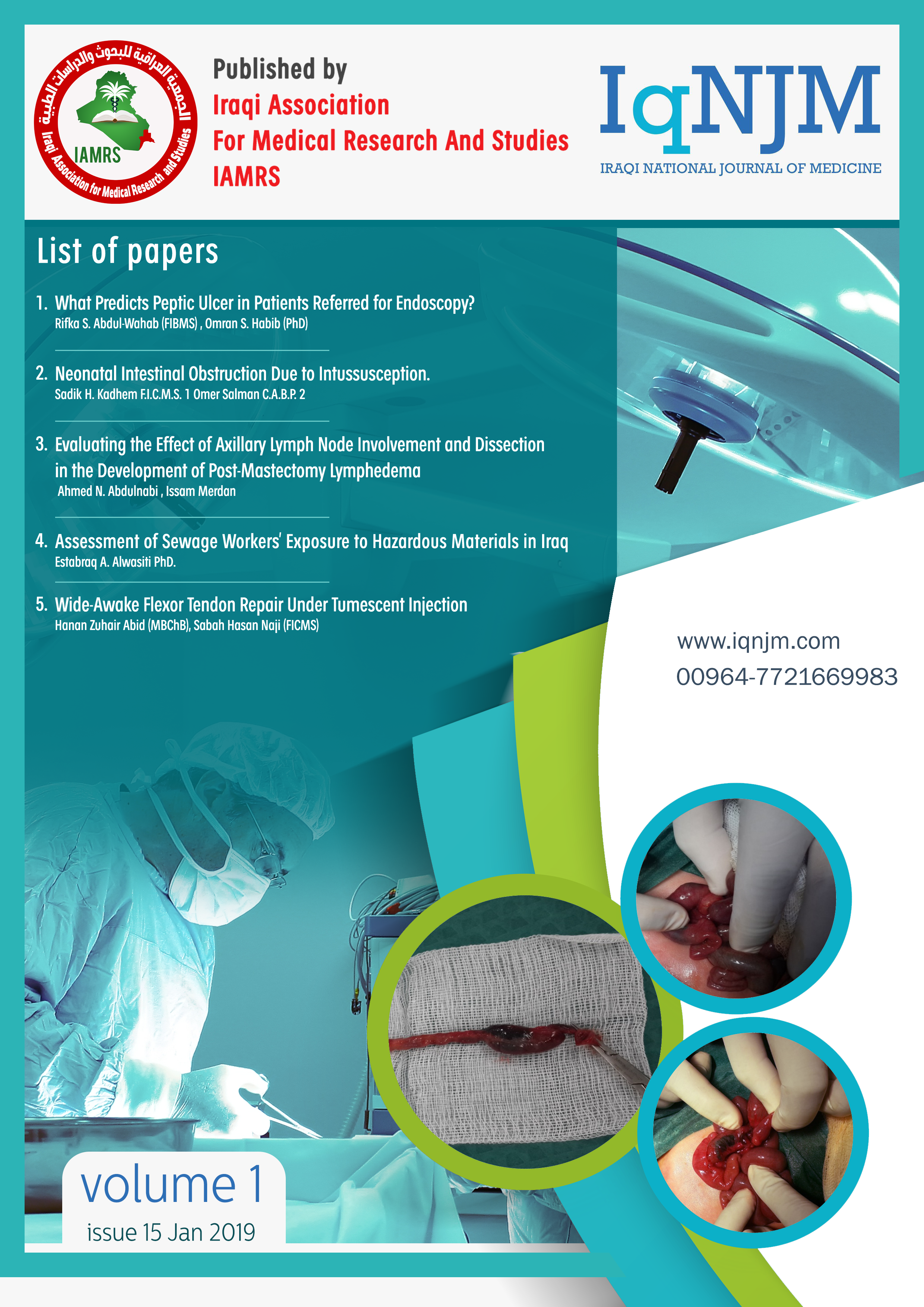Abstract
Background:
Peptic ulcers and other gastric lesions are significant
medical conditions. Endoscopy is one useful diagnostic tool, the use of
which is dependent on patient selection
Objectives:
This study attempts to explore how predictive selected
symptoms may be, along with their characteristics in diagnosing peptic
ulcer s and other gastric lesions in patients undergoing endoscopy.
Methods:
A cross-sectional study was conducted with 15 2 patients
referred to the endoscopic unit at Al Sadr teaching hospital in Basrah.
The patients were carefully interviewed to determine clinical and
sociodemographic characteristics. They were subjected to endoscopic
examination by a specialist physician, and their results were recorded
on the same information sheet. Data were analyzed using the
Statistical Package for Social Science, version 20.
Results:
Given the complexity of the risk factors, clinical
manifestations, and diagnostic techniques, it seems difficult to predict
which patients are likely to have peptic ulcers and which are not. In
this study, only self-reported stress and H pylori infection were found
to significantly predict the likelihood of peptic ulcers among patients
subjected to endoscopic examination.
Conclusions:
Patients subjected to endoscopy are expected to have a
variety of gastric lesions including peptic ulcer. A substantial
proportion of these patients were entirely lesion free
Peptic ulcers and other gastric lesions are significant
medical conditions. Endoscopy is one useful diagnostic tool, the use of
which is dependent on patient selection
Objectives:
This study attempts to explore how predictive selected
symptoms may be, along with their characteristics in diagnosing peptic
ulcer s and other gastric lesions in patients undergoing endoscopy.
Methods:
A cross-sectional study was conducted with 15 2 patients
referred to the endoscopic unit at Al Sadr teaching hospital in Basrah.
The patients were carefully interviewed to determine clinical and
sociodemographic characteristics. They were subjected to endoscopic
examination by a specialist physician, and their results were recorded
on the same information sheet. Data were analyzed using the
Statistical Package for Social Science, version 20.
Results:
Given the complexity of the risk factors, clinical
manifestations, and diagnostic techniques, it seems difficult to predict
which patients are likely to have peptic ulcers and which are not. In
this study, only self-reported stress and H pylori infection were found
to significantly predict the likelihood of peptic ulcers among patients
subjected to endoscopic examination.
Conclusions:
Patients subjected to endoscopy are expected to have a
variety of gastric lesions including peptic ulcer. A substantial
proportion of these patients were entirely lesion free
Keywords
Basrah
Endoscopy
pediction
peptic ulcer
